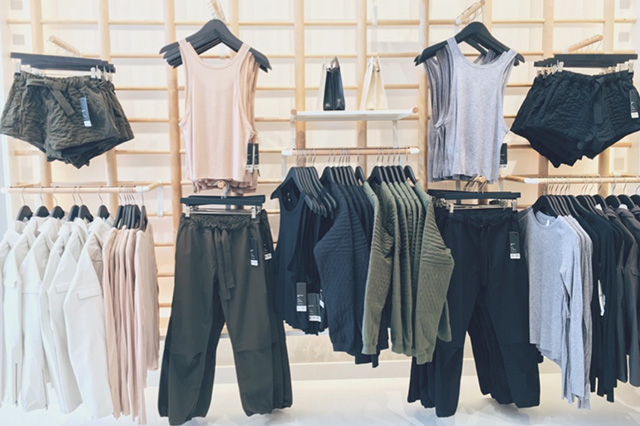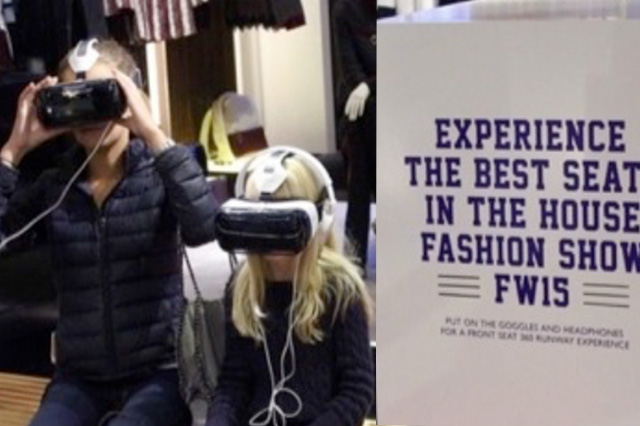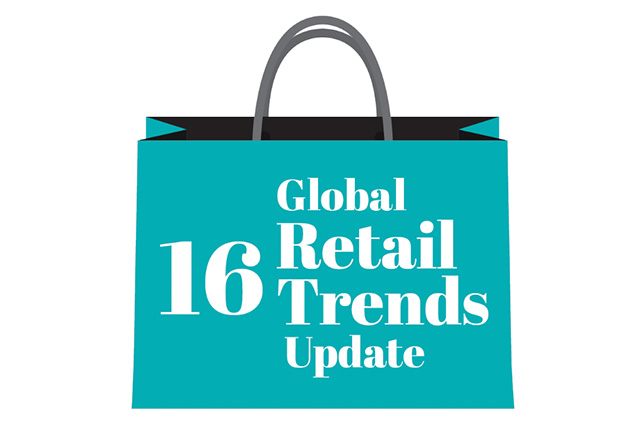Online Consignment Market
KEY POINTS
- The popularity of consignment shopping exploded in the wake of the Great Recession and an array of new online stores that allow people to buy and sell used clothing have emerged, challenging eBay, the original online consignment store.
- Online consignment is estimated to be a $34 billion industry, according to ThredUP, and it is growing at 10% annually, according to SnobSwap, another competitor.
- Venture capital is fueling the sector’s growth .investors poured hundreds of millions of dollars into fashion resale in 2015 alone. Total funding over the past five years has surpassed the $450 million mark.
- Environmental concerns, sustainability and a strong desire to declutter and organize their homes are driving shoppers to this industry.
- A crowded field and intense competition is causing consolidation. In August 2015, Bib + Tuck was acquired by Crossroads, a national chain store, and more recently Tradesy acquired Shop Hers.
- Analysts agree that the companies that will succeed in the online consignment business will be the ones that both find and deliver the products consumers demand and make buying and selling easy and convenient.
EXECUTIVE SUMMARY
The popularity of consignment shopping exploded in the wake of the Great Recession, bringing with it a host of new online stores that allow people to buy and sell used clothing. eBay was the original online consignment store, but over the past few years, a flurry of newcomers have entered the sector.
Online consignment is estimated to be a $34 billion industry, according to ThredUP, one of the first entrants in this market, and it is growing at 10% annually, according to SnobSwap. Venture capital is fueling the sector’s growth, and investors poured hundreds of millions of dollars into fashion resale in 2015 alone. Total funding over the past five years has passed the $450 million mark.
While earning and saving money can be primary motivators when it comes to online resale, it is not all about the dollars. Research shows that more Americans are now considering the environmental impact of their purchases, and that many have a strong desire to declutter their home. The trend toward more sustainable and eco-friendly shopping is part of a larger shift in consumption habits.
The industry’s growth can also be partly attributed to the various “white glove” services provided by online consignment companies. These range from in-home help with sorting to meticulous professional authentication services, and they help make the experience easy and user-friendly for shoppers and sellers alike.
Major companies in online consignment include ThredUP, Tradesy, The RealReal, Poshmark and Vestiaire Collective. Each tries to differentiate itself by either clientele or merchandise, targeting different shoppers and markets, but the sector is already saturated. Investors and analysts agree that the competition is too intense to ensure everyone’s survival, and consolidation has already begun. For example, Bib + Tuck, a resale website funded by fashion entrepreneur J. Christopher Burch and others, announced in August 2015 that it was shutting down after being sold to Crossroads, a national store chain.
eBay and Amazon have noted the ascendance of these online fashion resellers and are ramping up their fashion business efforts in response, attempting to beat back the threat these companies pose. But success in the industry relies on meticulous curation and not on the vending-machine mentality of these e-commerce giants, so many observers think they are unlikely to succeed in this space.
The companies that do succeed will be the ones that figure out how to find and deliver the products that consumers demand while making shopping easy and convenient. It will probably come down to how well each company carries out its strategy and differentiates itself from the pack.
OVERVIEW
Consignment shopping exploded in the wake of the Great Recession, spurring the creation of a host of new online stores that allow people to buy and sell used clothing. eBay was the original online consignment store, but over the past few years, there have been many new entrants in the space. The market has experienced tremendous growth, with investors funneling cash into more than a dozen new companies, each looking to capitalize on what it sees as a weak spot for both Amazon and resale leader eBay.
THE ONLINE CONSIGNMENT MARKET
It is difficult to arrive at an accurate market size for this industry, since all the companies in the sector are private and do not disclose sales figures. ThredUP has estimated that the market is worth $34 billion and SnobSwap estimates that it is growing at a 10% compound annual growth rate.
Online consignment is still just a fraction of the entire apparel market, which was worth $400 billion in 2014. Nevertheless, it is now almost three times the size of the traditional brick-and-mortar consignment shop market, which First Research estimates to have annual revenues of approximately $16 billion (including revenue from antique stores, which represent 13% of the total).
Consumers are increasingly shopping online for fashion, whether new or resale, and the industry appears to show no signs of slowing down. eMarketer estimates that US retail e-commerce sales of apparel and accessories will have totaled $60 billion in 2015, a 17.2% share of total US retail e-commerce, and that they will grow to $86 billion in 2018.
VENTURE CAPITAL FIRMS POUR MILLIONS INTO ONLINE FASHION RESALE
The interest that venture capital firms have shown in the industry is one indicator of market value and growth. Venture capital firms are fueling the growth of online fashion consignment, and they poured hundreds of millions of dollars into fashion resale in 2015. Total funding over the past five years passed the $450 million mark.
In January 2015, online consignment shop Tradesy raised $30 million. By the end of April, vintage luxury reseller The RealReal had raised $40 million and social commerce site Poshmark had taken in $25 million. European resale shop Vestiaire Collective scored a $37 million round in September. Also in September, ThredUP had a huge financing round led by Goldman Sachs that raised $81 million.
HOW THE BUSINESS WORKS
Most of the online consignment shops operate the same way. At ThredUP, those wanting to sell simply request a free Clean Out bag, fill up it up and send it in. Part of the company’s success can be attributed to its understanding that cleaning out closets can be an unsatisfying experience, even when the person doing the cleaning plans to donate the items. “What we’ve found is that people often put stuff in a box or bag, and it never moves from there,” ThredUP CEO James Reinhart said. “It just sits in the car, or in the closet.” Using ThredUP can turn decluttering into an easy, convenient and feel-good journey of discovery. “Let’s just embrace the fact that all people want to do is shove those clothes in a bag, seal it up and get rid of it,” Reinhart said. “They don’t want to have to separate it into little piles, or the experience becomes too labor-intensive.”
For ThredUP, 50% of the items submitted will be accepted, on average; the remainder can be either returned or donated to third-party sellers or textile-recycling partners, with proceeds going to cover ThredUP’s shipping and labor costs.
There is no need for sellers to photograph their items or price them—ThredUP does both. Accepted items are often posted online within a couple of days of receipt. Items over $60 are handled by consignment, with payout at sale, and the rest with payment up front. Sellers can choose to receive payment in cash or ThredUP credit, or donate it to a cause.
For those who buy, ThredUP offers an inviting experience, with options to search by style, color, price, brand and condition. For example, shoppers can search for items that are new and still have their original price tags or for those that have no “tiny flaws.”
MAJOR DRIVERS OF ONLINE CONSIGNMENT
CONSUMERS ARE MORE WILLING TO PURCHASE SECONDHAND
Online consignment’s growth can be partly attributed to the industry’s white glove offerings, particularly with regard to packaging and the professional authentication of luxury items. When an item is professionally authenticated and sent, as Reinhart says, “in a beautiful box with tissue and a sticker,” it convinces consumers that they are purchasing quality and getting value.
Analysts argue that this is part of a fundamental shift that is taking place in the way consumers relate to all kinds of secondhand goods. In the past, people have purchased used cars and other secondhand items reluctantly and with lingering uncertainty about product quality. Now, sellers are offering quality guarantees to ease buyers’ fears: some preowned cars come with certifications, for example, as do many factory-refurbished electronics. Consumers historically had reservations about buying fashion secondhand, too, but now they eagerly shop the online consignment marketplace because it offers a consistent mix of great, branded products in verified, like-new condition and at incredible prices.
EARNING AND SAVING MONEY ARE NOT THE ONLY MOTIVATIONS
Earning and saving money are not the only reasons consumers participate in online resale. ThredUP, in its Third Annual Resale Report, asked consumers why they shop online consignment. While about a third of respondents pointed to earning extra cash and saving money, others answered that it was not all about the money, citing factors such as a desire to declutter and be eco-friendly.
DECLUTTERING AND OWNING LESS/SHIFTING CONSUMER BEHAVIOR
When Marie Kondo’s blockbuster book, The Life-Changing Magic of Tidying Up: The Japanese Art of Decluttering and Organizing, was published in the US in 2014, it quickly reached the top of many best-seller lists. More than 3 million copies of the book were sold worldwide and the phenomenon that had already swept her native Japan, as well as Europe, went global. If items do not elicit joy in their owner, Kondo says, they should be passed on to create joy elsewhere. The book also claims that tidying up one’s home can transform one’s love life or career.
The book’s philosophy on decluttering was a boon to the consignment industry, as many items in the average woman’s closet go unworn each year—up to 70% of garments, according to ThredUP.Americans are passionately following Kondo’s advice to prioritize satisfying life experiences over the acquisition of more stuff, according to The New York Times, which recently reported that consignment shops are seeing an uptick in fashionable items purged from closets as a result of “the Marie Kondo effect.”
ThredUP has noted a concurrent consumer trend toward wardrobe sharing. “With fashion resale, people can consider shopping more of a cycle, rather than permanent ownership,” said CEO Reinhart. This concept of sharing wardrobes is one more facet of the sharing economy currently epitomized by Airbnb and Uber. Consulting firm McKinsey notes that the sharing economy is growing rapidly, with some projections putting the sector’s revenues at $335 billion globally in 2015. ThredUP notes that the US is in the midst of “a huge societal shift, [with] more and more consumers simplifying their lives, doing more with less and prioritizing experiences over the acquisition of new stuff.”
ECO-FRIENDLY DRIVERS
Consumers are also showing a desire to be more eco-friendly and, accordingly, are shifting to more sustainable consumption habits. Consignment is a great way to shop for clothes for those concerned about the environment, sustainability and limiting waste.
ThredUP notes that “resale businesses represent one of the fastest-growing segments of the retail industry,” with the number of stores growing by 7% annually. Americans are increasingly shopping at thrift and consignment shops, according to the ThredUP survey:
CITIES LEADING THE RESALE TREND
Some communities have incorporated online consignment into their lives much faster than others. According to ThredUP, the five US cities where secondhand shopping is growing the fastest are:
The reselling of clothing online is growing the fastest in these five cities:
MOST POPULAR BRANDS: BUYING/SELLING
The best brands to buy, in terms of resale value, include:
- Women’s designer: Michael Kors, Nanette Lepore, Tibi, Diane von Furstenburg, Alice + Olivia
- Handbags: Marc Jacobs, Banana Republic, Kooba, Dooney & Bourke, Coach
- Kids’: Brooks Brothers, Hartstrings, Oilily, Ralph Lauren, Petit Bateau
For resale value, the best brands to sell include:
- Women’s: Rebecca Minkoff, Kate Spade New York, Tory Burch, Marc Jacobs, rag & bone
- Kids’: UGG Australia, Minnetonka, The North Face, Crewcuts, Patagonia
Overall, ThredUP says the fastest-selling brands and categories are:
MAJOR ONLINE CONSIGNMENT COMPANIES
ThredUP is the most mainstream and well-known online fashion reseller, and it claims to have been the first to enter the industry. Other major players include Tradesy, The RealReal, Poshmark and Vestiaire Collective.
Headquarters: San Francisco, CA
Founded: 2009
Website: http://www.thredup.com
Founders: James Reinhart, Oliver Lubin, Chris Homer
Description: ThredUP is an online marketplace for buying and selling like-new clothing. The company works by combining fashion resale and e-commerce: customers send in consignment-quality clothing in a prepaid Clean Out bag, earn cash up front for their clothing, and can shop their favorite styles and brands for up to 90% off retail. The company is advised by current Netflix CEO Reed Hastings and former eBay COO Brian Swette, and is backed by world-class investors.
Total Equity Funding: $131.12 million in six rounds from 10 investors. In September 2015, ThredUP secured an $81 million investment led by Goldman Sachs Investment Partners that values the company at around $500 million. The investment appears to be the largest to date in a company specializing in the sale of secondhand clothing.
Sales/Revenue: ThredUP does not disclose sales figures, but a company spokesman said that “sales have increased nearly 50% each quarter for the past three years.” Fortune noted in September 2015 that the company “is not profitable,” but also that the “CEO said that his company has relatively high margins.”
What Sets It Apart: ThredUP has said its target market is busy moms, and its merchandise veers toward the lower end of the spectrum, with brands such as Ann Taylor, Banana Republic and Old Navy.
Acquisitions: In February 2015, ThredUP acquired Kindermint for an undisclosed amount. The acquisition marked the continuation of a trend within the ThredUp business toward higher-end merchandise. After expanding from kids’ to juniors’ and eventually into women’s apparel over its first three years in business, the company launched its X Collection in April 2015. The collection prominently features premium women’s designers such as Tory Burch, Kate Spade, DVF and Helmut Lang.
Headquarters: Santa Monica, CA
Founded: 2012
Website: www.tradesy.com
Founder: Tracy DiNunzio
Description: Tradesy is a peer-to-peer marketplace providing a platform for buying and selling fashion. Brands available on the site include Louis Vuitton, Hermès, Chanel, Gucci, Prada, Saint Laurent, Givenchy, Balenciaga, Chloe and more. Sellers get a free shipping kit when their item sells. They can print a prepaid label and ship using their own materials.
Total Equity Funding: $44.5 million in three rounds from 15 investors, including Kleiner Perkins Caufield & Byers and Sir Richard Branson.
Sales/Revenue: DiNunzio said the site has grown its revenue by 400% year over year and that in 2014, it grew by over 600%. Tradesy now has 4 million members, according to DiNunzio.
What Sets It Apart: Tradesy resells higher-end fashion, including designer bags from Louis Vuitton and Chanel and shoes by Tory Burch and Prada, but the site is not limited to high-end designer clothing or curated vintage finds. Instead, it features a variety of in-demand brands and styles.
Acquisitions: In November 2015, it was reported that Tradesy had bought rival online consignment site Shop Hers for an undisclosed price. Tradesy will also soon be advertising on TV via a deal with marketing company Guthy-Renker.
Headquarters: San Francisco, CA
Founded: 2011
Website: www.therealreal.com
Founder: Julie Wainwright
Description: The RealReal is the leader in authenticated luxury consignment, offering a large selection of preowned and authenticated luxury items, including men’s and women’s luxury fashion, fine jewelry and watches, and fine art. The company sells pieces from designers such as Chanel, Hermès and Louis Vuitton; jewelry and watches from Cartier, Rolex and Van Cleef & Arpels; and blue-chip art from Andy Warhol, Roy Lichtenstein and others. The RealReal offers free white glove pickup in 16 US cities, or free shipping via FedEx. Consignors receive 60% of the sale price to start, which is elevated to 70% when they reach $7,500 in annual sales.
Total Equity Funding: $82.97 million in five rounds from 14 investors.
Sales/Revenue: The company stated in April 2015 that it is currently on track to double the $100 million in revenue it earned in 2014.
What Sets It Apart: The RealReal sells luxury brands such as Chanel and Prada, but distinguishes itself from other resale luxury sites by its ability to spot fake designer goods and weed them out. The RealReal has a strict “no fakes” policy and a rigorous authentication process. The company even holds internal “Find the Fake” contests, where authenticators get prizes for identifying counterfeits.
Acquisitions: The company stated in April 2015 that it had no plans for acquisition at the time.
Headquarters: Menlo Park, CA
Founded: 2011
Website: http://poshmark.com
Founders: Manish Chandra, Tracy Sun, Gautam Golwala, Chetan Pungaliya
Description: Poshmark is the largest community marketplace for fashion where women can buy, sell and share their personal style. With millions of shoppers and over 700,000 sellers, Poshmark brings together a vibrant community of women every day to express themselves and share their love of fashion.
Total Equity Funding: $40.5 million in three rounds from 12 investors.
Sales/Revenue: In April 2015, the company said, “Poshmark has doubled its revenue in the past six months to $200 million in annual sales.”
What Sets It Apart: What makes Poshmark different is that it does not play the role of middleman when it comes to managing the transactions on its platform. Instead, buyers and sellers connect with each other directly, the way they do on eBay. Poshmark simply provides a suite of tools for customers to take advantage of—ranging from printable shipping labels to secure payment transfers to an optional authentication service for high-end goods. Poshmark does not restrict its merchandise to luxury items: buyers can find anything from a $25 fast-fashion article of clothing to a $5,000 handbag, the CEO says.
Acquisitions: None.
Headquarters: Paris, France
Founded: 2009
Website: www.vestiairecollective.com
Founders: Sébastien Fabre, Fanny Moizant, Alexandre Cognard, Christian Jorge, Henrique Fernandes, Sophie Hersan
Description: Vestiaire Collective is a global marketplace for the resale of luxury goods. The company currently has sites in France and the UK. All items are chosen, checked and shipped by its experts in Paris. On Vestiairecollective.com, customers can buy and sell up-to-date, on-trend handbags, accessories and secondhand clothing for women, men and children.
Total Equity Funding: $68.73 million in four rounds from five investors.
Sales/Revenue: According to press reports, Vestiaire Collective claims its revenue has doubled each year since its debut. In 2012 (latest figures available), the company said it generated €18 million (about US$20 million) in revenue, charging commissions as high as 33%, but these figures are not corroborated by S&P Capital IQ. Capital IQ reports Vestiaire Collective’s 2014 revenue as €12.3 million.
What Sets It Apart: Vestiaire Collective targets the high-end luxury fashion market. Its model includes having a team of fashion experts who certify that every product is in good condition. Items that do not meet the team’s quality standards are rejected.
Acquisitions: In September 2013, it was announced that Condé Nast had acquired a stake in Vestiaire Collective.
OTHER ONLINE CONSIGNMENT COMPANIES
There are many other companies operating in the online consignment space, and each tries to differentiate itself by focusing on a particular niche:
- Vinted is a Lithuania-based clothing swapper.
- Threadflip is a full-service consignment marketplace aimed at the fashionista with little time.
- Rebagg deals in designer handbags.
- Vaunte targets the closets of fashion insiders.
- SnobSwap partners with offline stores.
- Refashioner strives to curate unique items.
- Swap.com specializes in baby and kids’ items.
Competition
Stiff Competition, Consolidation Ahead
The hundreds of millions that venture capitalists have invested in online consignment companies indicate that there will be stiff competition ahead. Investors and analysts agree that the field is too crowded to ensure everyone’s survival, and consolidation has already begun. For example, in August 2015, Bib + Tuck was sold to Crossroads and, more recently, Tradesy acquired Shop Hers.
EBAY, AMAZON FIGHT BACK
Though fashion is seen as the most vulnerable segment for both eBay and Amazon, they are not giving up without a fight. eBay got into the fashion outlet business in 2011 and opened branded online shops for designers in 2014. Then, in 2015, it bought Twice, a clothing flipper that had raised $23 million, and folded the startup’s employees and technology into its own operations. The company also offers eBay Valet, a consignment service that does not require the traditional self-listing that is the eBay hallmark. The company remains the resale industry’s leader by size and selection, and has been expanding its category pages and app in order to make them easier to peruse rather than search. “For fashion, it’s really critical for us to show consumers all the inventory we have,” said Marcelle Parrish, eBay’s General Manager of Fashion.
Josh Goldman, a general partner at Norwest Venture Partners and an investor in Threadflip, said of Amazon, “Fashion might be the only category where Amazon has failed quite spectacularly.” He noted that a simple search-and-listing site is “just not the right place to browse and purchase fashion,” and that this is the same reason eBay has not been able to snuff out the resale upstarts.
Amazon entered the apparel market in 2002, then acquired fashion merchant Shopbop in 2006 and shoe seller Zappos in 2009. It also has the Amazon Fashion, East Dane and MyHabit fashion sites under its banner. In the 2013 book The Everything Store: Jeff Bezos and the Age of Amazon, CEO Bezos is quoted as saying, “In order to be a two-hundred-billion-dollar company, we’ve got to learn how to sell clothes and food.”
While Amazon has spent millions of dollars to expand its presence in fashion, industry observers say it is difficult to insert couture items under the Amazon banner. The company has long thrived on offering a practical, easy way to buy just about anything—but fashion is often impractical, dominated by unpredictable trends and personal taste. Where Amazon is known for being a massive vending machine, fashion must be carefully curated.
Who Will Succeed in the Online Consignment Business?
Analysts agree that the companies that will succeed in the online consignment business will be the ones that both find and deliver the products consumers demand and make buying and selling easy and convenient. Bloomberg notes that it will probably come down to how well each company carries out its strategy and differentiates itself from the pack, since online consignment is not fundamentally a new business model. “I don’t even know if there is going to be one winner,” said Sucharita Mulpuru, an analyst at Forrester Research. “This model is never going to take over the world.”








